Hyun-Tak Kim is one of the lead researchers for the LK99 team.
This new paper presents a specific critical temperature for PCPOSOS, demonstrating consistency with the original authors’ data.
In this study, they claim to clearly showed the superconductivity of PCPOSOS. Each sample exhibited zero resistance and superconductor-conductor phase transitions, with zero resistance values and critical temperatures clearly matching the data provided by the original authors. They release the raw data and videos of the zero resistance and temperature-dependent measurements publicly available online. Also, they will sequentially disclose XRD analysis, SQUID M vs H Meissner effect, and critical current data in future papers. A scholarly mindset entails a critical attitude. It is important to distinguish between skepticism and denial and maintain an attitude aimed at uncovering the truth. they welcome constructive discussions and questions regarding our samples and data.
NOTE: The zero resistance measurements have been criticized before. The team is continuing to work to improve their production and testing.
They also shared some videos of the experiments.
Video of the production process.
New partial levitation video.

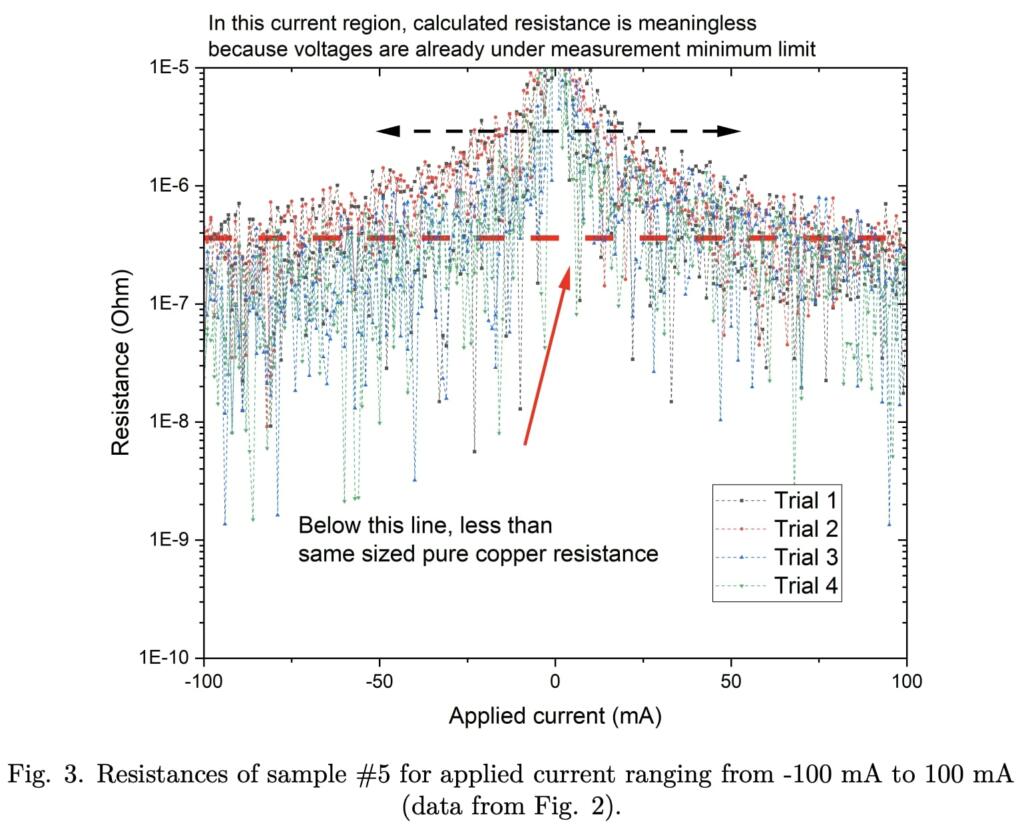
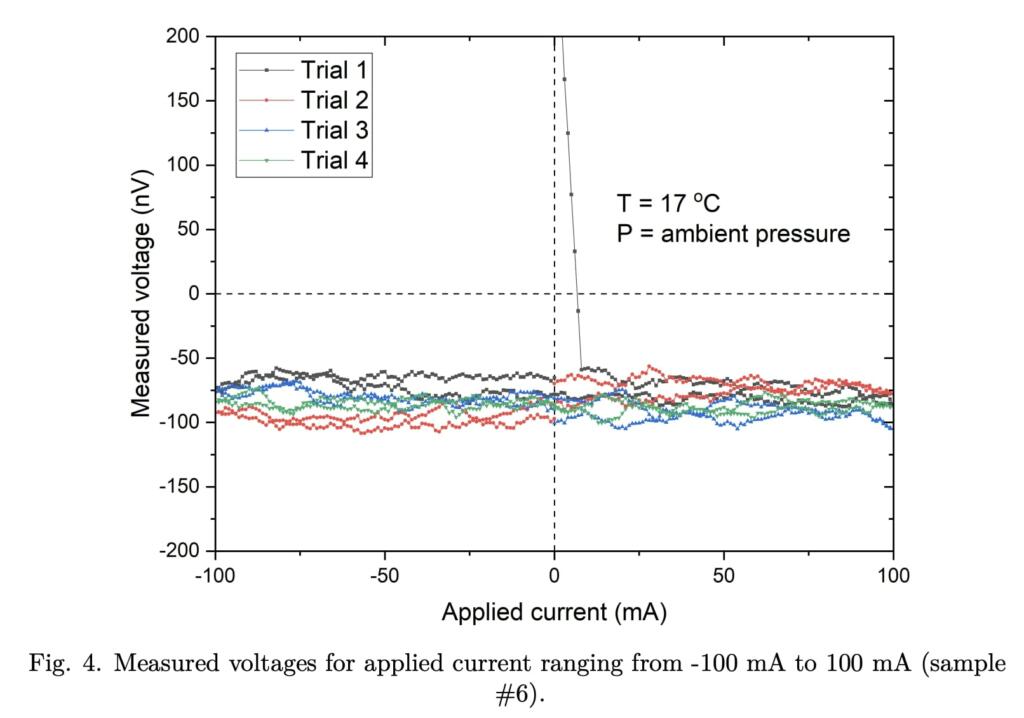
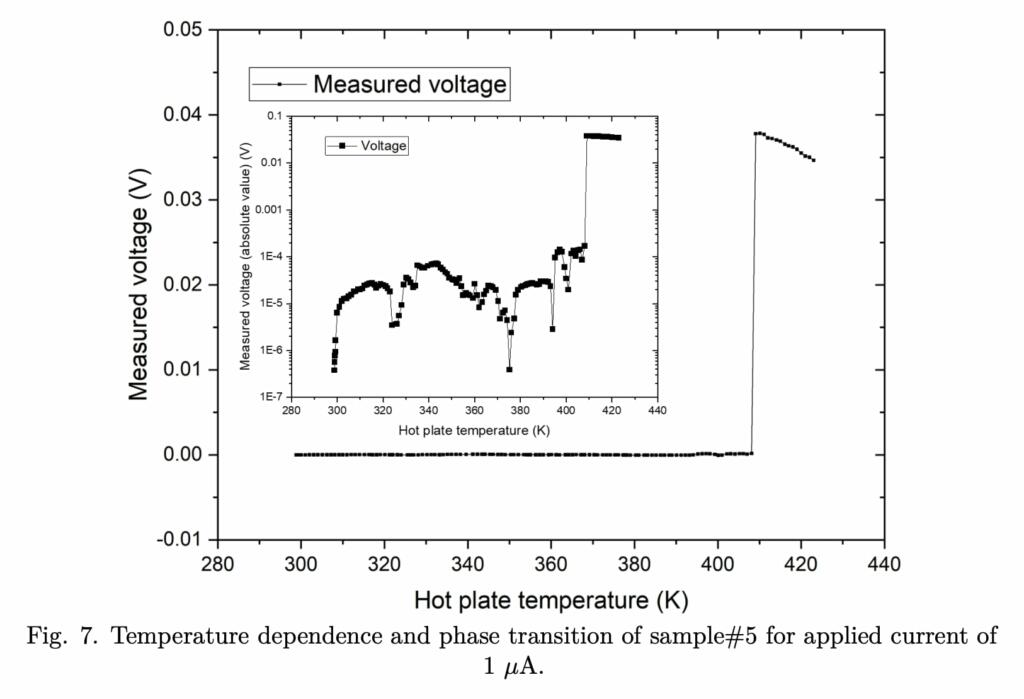
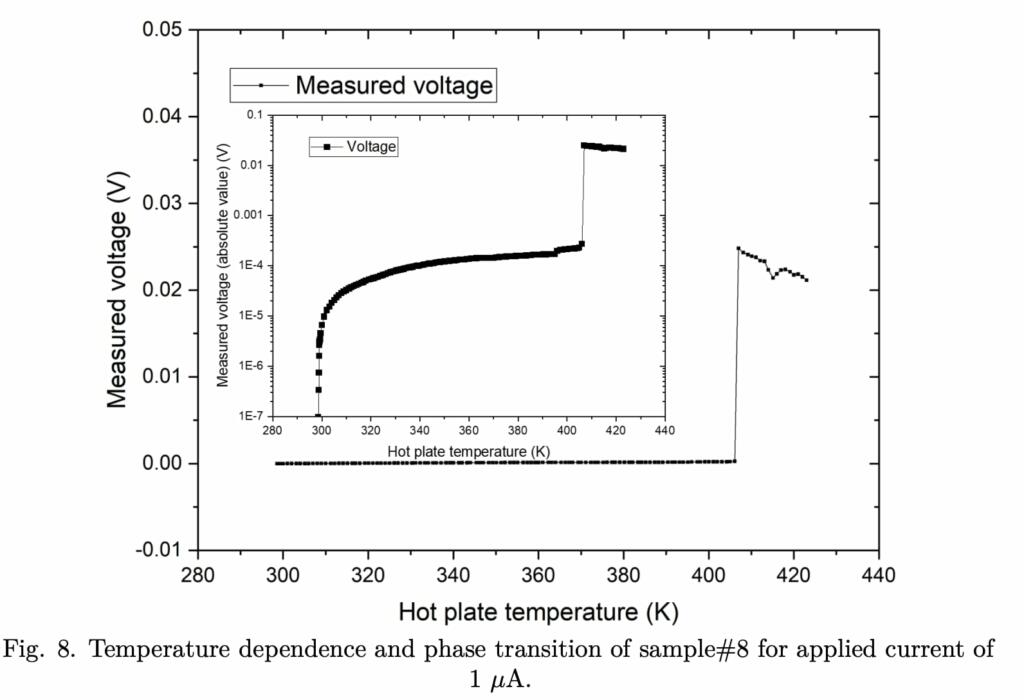
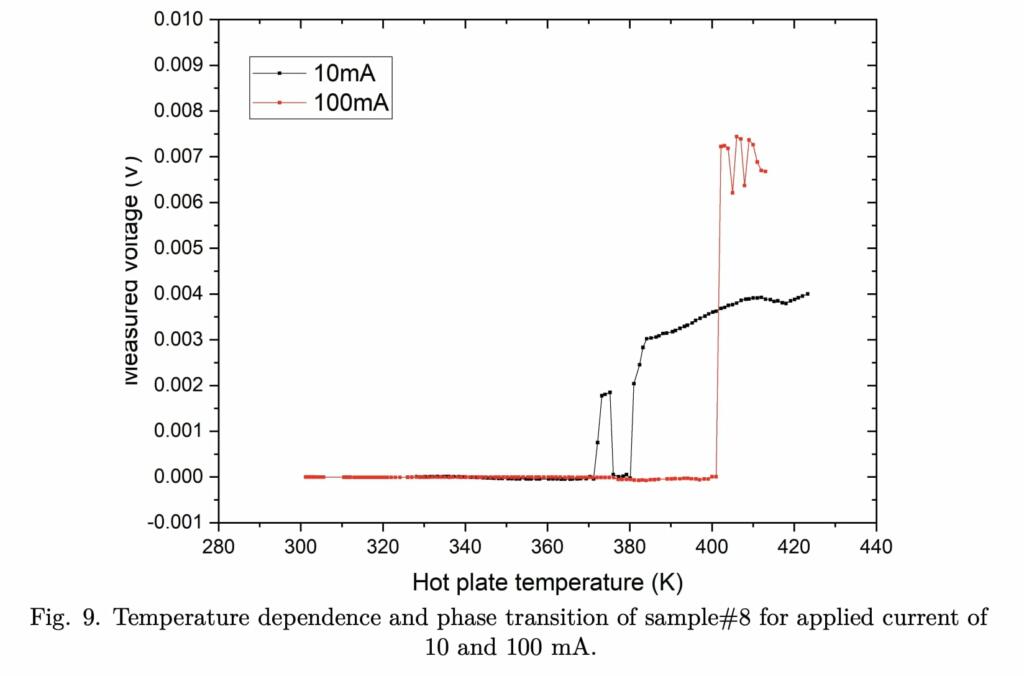
Recently, PCPOSOS (Pb10−xCux[P(O1−ySy)4]6O1−zSz) (x= 3 ~6, y+z=0.3 ~ 0.4), which has garnered international attention, has been recognized as a potential room-temperature superconductor (RTSC). Although many research teams have attempted to replicate the it, they replicated PCPOO (Pb10−xCux(PO4)O) (x= 0.9 ~1.1) which is the previously known chemical formula. Research teams concluded that PCPOO is an insulator. However, the possibility of superconductivity emerging from the lanakite structure has been suggested through DFT simulation. Also, Kim suggested that the superconductivity of PCPOSOS can be interpreted by BR-BCS theory. To date, unfortunately, only a few studies have seriously attempted to replicate PCPOSOS. However, the potential Meissner effect has been discovered by some research groups [in China]. Furthermore, in this groups previous study, they repeatedly confirmed the zero resistance of PCPOSOS. In this study, they focused on the phase transition depending on temperature, which is crucial evidence of superconductivity. They have repeatedly validated the phase transition and present the critical temperature. The estimated critical temperature aligns with the claims of the original authors. Moreover, for those who may not understand despite the zero resistance data in their previous paper, they kindly provide additional explanations

Brian Wang is a Futurist Thought Leader and a popular Science blogger with 1 million readers per month. His blog Nextbigfuture.com is ranked #1 Science News Blog. It covers many disruptive technology and trends including Space, Robotics, Artificial Intelligence, Medicine, Anti-aging Biotechnology, and Nanotechnology.
Known for identifying cutting edge technologies, he is currently a Co-Founder of a startup and fundraiser for high potential early-stage companies. He is the Head of Research for Allocations for deep technology investments and an Angel Investor at Space Angels.
A frequent speaker at corporations, he has been a TEDx speaker, a Singularity University speaker and guest at numerous interviews for radio and podcasts. He is open to public speaking and advising engagements.


The Claude E. Shannon model for guiding the search for room-temperature ambient-pressure superconductor has these steps:
1. symbol generation for electricity: create charge carriers into a corral for massing them in order to form charged bosons; semiconductors or insulators can generate more charge carriers as temperature rises.
2. encode the symbols: pair the charged carriers to make charged bosons; bosons allow massive number of them going into the identical quantum state; lowering ambient temperature can make this happen.
3. transmit the encoded symbols over a noisy channel; the coherence length of these masses charged bosons can reach the periodic length of a crystalline lattice; the Bloch waves’ Fourier-analyzed trigonometric component waves extend coherence length to practically infinite.
The Claude E. Shannon model for guiding the search for room-temperature ambient-pressure superconductor has these steps:
1. symbol generation for electricity: create charge carriers into a corral for massing them in order to form charged bosons; semiconductors or insulators can generate more charge carriers as temperature rises.
2. encode the symbols: pair the charged carriers to make charged bosons; bosons allow massive number of them going into the identical quantum state; lowering ambient temperature can make this happen
3. transmit the encoded symbols over a noisy channel; the coherence length of these masses charged bosons can reach the periodic length of a crystalline lattice; the Bloch waves’ Fourier-analyzed trigonometric component waves extend coherence length to practically infinite.
The lead content is a problem. There are better room-temperature ambient-pressure superconductor materials to be created. If we can find such a material with excellent magnetic field resistance, we can make nuclear fusion *ECONOMICALLY* practical using magnetic field confinement. That will usher in an age of near-inexhaustible and *CHEAP* electricity⚡for global peace and prosperity.
The Claude E. Shannon model for guiding the search for room-temperature ambient-pressure superconductor has these steps:
1. symbol generation for electricity: create charge carriers into a corral for massing them in order to form charged bosons; semiconductors or insulators can generate more charge carriers as temperature rises.
2. encode the symbols: pair the charged carriers to make charged bosons; bosons allow massive number of them going into the identical quantum state; lowering ambient temperature can make this happen.
3. transmit the encoded symbols over a noisy channel; the coherence length of these masses charged bosons can reach the periodic length of a crystalline lattice; the Bloch waves’ Fourier-analyzed trigonometric component waves extend coherence length to practically infinite.
I really don’t understand what you mean.
In an electric current, electrons are the symbols to be communicated from the source to the destination over a noisy channel (the room-temperature ambient-pressure superconductor being the channel, the noise being the thermal wriggling of the atoms due to the room temperature.) The bosons may be Cooper pairs in a conventional superconductor such as lead.
[ What would be a model/concept for utilizing communication theory being reference for a cooled (verified SC at that temperature) pressure and magnetic field defined (how parametrize communication theory) SC?
Interesting, maybe an example could visualize what to expect? (thx) ]
Iris Alexandra or Alexander (we don’t really mind either, male or female He created them !) crucially emphasized the potential role of the dopant sulfur in the superconductivity. Both the Korean and Chinese efforts have sought to synthesize the room-temperature superconductor by *controlling* the role of sulfur. Silicon displacing sulfur in Iris’ preparation recipe was a crucial step taken to isolate the role played by the dopant sulfur.
Science doesn’t measure success by money alone. Backing by Big Money doesn’t prove the objective truth or untruth of anything in Science but limits its feasibility. The U.S.A. is far superior in science and technology because of our inclination to *FUND* applied research. Of course, we got a whole bunch of greedy financial idiots in our investment banks precipitating the 2007-2013 Great Recession financial *FRAUD* .
Lots of talk and so on and little evidence except for some partly levitating flakes. I think that even 1 year after publishing we won’t get any nearer that that. If there was any real possibility we would see major labs pursue research with lots of financial backing (not some bread crumbs).
Was Andrea Rossi dethroned by Koreans? Science is good for smart scammers and charlatans. They can keep claiming, what they claim to get more money for research or sell the patent. It is hard to prove them they are fraud.
The scientific community often puts a lot of effort and failure into it, and on top of that, you have the holy grail of achievement. It is difficult to think that it is the position of a scholar who explores the truth to drive all of the fields as crooks because of the truth that there was a crook in a specific research field. A new alternative to the next level of LK-99 called PCPOSOS has been proposed, and what kind of crook are you talking about here? I can’t bring any doubt about my intention of this low-key and narrow-minded behavior.
The lead content is a problem. There are better room-temperature ambient-pressure superconductor materials to be created. If we can find such a material with excellent magnetic field resistance, we can make nuclear fusion *ECONOMICALLY* practical using magnetic field confinement. That will usher in an age of near-inexhaustible and *CHEAP* electricity⚡for global peace and prosperity.
[ me struggling on [theories about truely zero resistance within SC, RTSC]‘A consequence of this is that an electric current flowing in a loop of superconducting wire can persist indefinitely with no power source.’
means, a SC wire formed into a ring would have established a magnetic field from current flowing within the SC wire, from the beginning of this universe, ongoing with this sun becoming a red star, until all matter decays into radiated energy, photons (~10^69, with trillion=10^12, not long scale) (?)
‘https://youtu.be/uD4izuDMUQA?t=1697’ (‘time becomes meaningless’, wrtt, pls, explain our current theories with W=P*t, if t=0 or t=oo 🙂
If this magnetic field is not interacting with its surroundings (thereby transferring energy), it’s at least a (first order) ‘perpetuum mobile’ (?) and ‘perpetuum mobile”s of higher order are told (within physics theories) not to exist in reality (?)
‘Everything has its wonders, even darkness and silence…’ ]
When I first learnt of superconductivity in the late 1960s, a lead ring kept in superconducting temperature had been levitated for two years atop a magnet.
More recently, levitation has already been achieved for decades. There doesn’t seem to be any inherent limit to how long the zero resistance can be maintained. Theory requires the simultaneous transition of the Avogadro’s number like charged bosons into different quantum states to break the superconductivity. Higher temperature and a stronger magnetic field can break it but these conditions can be prevented.
I tend not to worry about most of the oxygen molecules darting to the other side of my room to asphyxiate me. It’s possible but practically *IMPOSSIBLE* .
[ Is SC within a Bose-Einstein-Condensate (BEC, being an exceptional situation, ~-459.67°F, for gases of bosons showing macroscopic quantum states) different from SC type I&II theories (state of matter)? Do we expect muons or tauons activity within SC theories? What’s the influence of gravity (comparable to ~pressure, being force, graviton?) to SC? (thx) ]